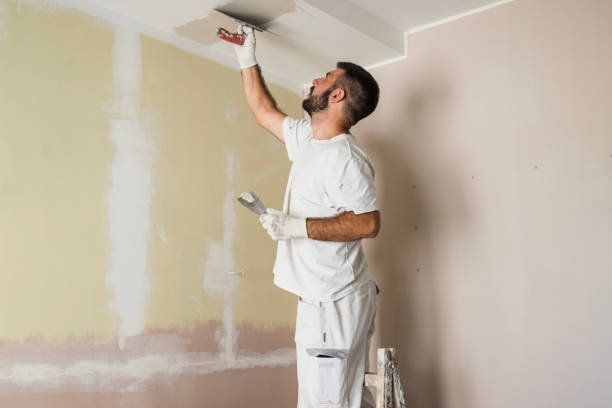Outside Plastering: Secure and Enhance Your Residential Or Commercial Property with Experience
Outside Plastering: Secure and Enhance Your Residential Or Commercial Property with Experience
Blog Article
A Comprehensive Overview to Mastering Plastering Skills for Your Restoration Needs

Important Devices and Products
Numerous necessary tools offer distinct purposes, making sure efficiency and accuracy throughout the plastering procedure. A high-grade trowel, for instance, is important for smoothing and applying plaster, while a hawk offers a stable platform for holding the product.
Along with devices, picking the best plastering products is crucial. Gypsum-based plasters are typically favored for their flexibility and convenience of usage, while cement-based alternatives are ideal for exterior applications due to their durability. Water and bonding representatives play significant duties in achieving appropriate uniformity and bond, ensuring that the plaster adheres efficiently to the surface.
Additionally, safety gear such as handwear covers, goggles, and masks is important to guard against dirt and irritation during the application procedure. By constructing the ideal mix of tools and products, plasterers can enhance their capability and create high-quality surfaces, eventually raising the total craftsmanship of their work.
Preparing Surfaces for Gluing
Achieving a smooth and long lasting plaster coating begins with careful preparation of the surfaces to be smudged. This fundamental step is important to making certain bond and the longevity of the plaster. Begin by examining the problem of the substrate-- whether it is masonry, concrete, or drywall-- eliminating any loose paint, dust, or particles that might hinder bonding.
Next, fix any type of blemishes such as holes or fractures. Make use of an ideal filler to attain a degree surface; this can be important for protecting against future problems. When repaired, guarantee the surface area is completely dry and tidy, as dampness can compromise plaster adherence.
For permeable surface areas, it is suggested to apply a bonding agent. This product improves adhesion and develops a trusted interface between the plaster and substrate. If dealing with formerly plastered surface areas, it might be needed to mess up or sand the location gently to provide a secret for the new plaster layer.
Smudging Methods and Tips
Mastering gluing techniques requires both ability and method to accomplish a flawless coating. One important technique is the application of the plaster in numerous slim layers, rather than a solitary thick coat.
When using the finish coat, employ a shoveling strategy that includes holding the trowel at a minor angle and operating in a round activity. This helps to develop a smooth surface and decreases the appearance of trowel marks. Furthermore, maintain a spray bottle of water convenient to haze the surface area gently; this keeps the plaster practical and permits smoother ending up.
Timing is crucial; job successfully, as the plaster starts to establish. When the plaster has actually firmed up but is still damp, utilize a moist sponge to carefully smooth the surface area further. Last but not least, allow ample drying time before fining sand or painting, ensuring your tough job leads to an expert, top quality surface.
Usual Mistakes to Stay Clear Of

An additional usual mistake is using plaster too thickly. Excitable applications can lead to splitting and extended drying out times. It's necessary to apply plaster in thin, even layers, permitting each layer to dry adequately before including more.
Furthermore, not making use of the right devices can impede the high quality of the surface. Making use of unacceptable trowels or mixers can create inconsistencies in the smudging process. Constantly choose for top notch devices designed for smudging jobs.
Lastly, several individuals ignore the importance of timing. Functioning in improper temperature levels or humidity levels can detrimentally influence plaster drying and healing. It is advisable to inspect climate condition and adjust your schedule as necessary.
Ending Up Touches for a Professional Look
The final phases of a gluing project are essential additional resources for accomplishing a refined, professional look. As soon as the plaster has actually dried out sufficiently, the next action is to analyze the surface for flaws.
After fining sand, it's suggested to cleanse the surface area to eliminate any type of dirt and particles. A moist towel works for this objective, complied with by an extensive drying period. If essential, applying a thin layer of completing plaster can improve the surface area even more, providing a smooth surface.
When the ending up plaster is dry, one more round of fining sand might be called for to accomplish the wanted smoothness. Finally, think about applying a primer before painting or wallpapering, which will certainly boost adhesion and longevity.
Final Thought
Understanding smudging abilities dramatically improves the quality of restoration projects. A thorough understanding of important devices, surface area preparation, and efficient techniques is crucial for achieving professional results. Awareness of usual errors enables for the evasion of costly mistakes, while attention to ending up touches makes certain a polished look. Eventually, the integration of these components adds to the creation of have a peek at these guys smooth, durable surfaces that raise the aesthetic value of any type of space, underscoring the importance of experienced plastering in home enhancement endeavors.
Water and bonding representatives play significant duties in accomplishing appropriate consistency and attachment, making certain that the plaster adheres properly to the surface area. Plastering.


Additionally, maintain a spray bottle of water convenient to haze the surface lightly; this maintains the plaster convenient and permits for smoother completing. (Plastering)
If essential, using a thin layer of Click This Link ending up plaster can enhance the surface better, providing a smooth surface.
Report this page